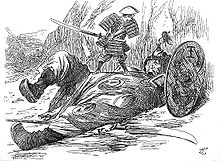Senkaku Islands are clearly part of Japan
Reference is made to the statement from the Embassy of the People's Republic of China in the September 30, 2010 issue of The Citizen under the headline "China's sovereignty over Diaoyu Islands indisputable".
There has clearly been certain misinterpretation of history and the facts concerning China's claims to its territorial sovereignty over the Senkaku Islands.
As we have stressed in our previous letter to the editor, there is no doubt that the Senkaku Islands are clearly an inherent territory of Japan, in light of historical facts and based on international law. To reiterate, Senkaku Islands were formally incorporated into the territory of Japan by a Cabinet Decision on January 14, 1895.
This decision was made after a thorough 10-year investigation of the Senkaku Islands that started in 1885, in which the Government of Japan confirmed that the islands had been uninhabited and showed no trace of having been under the control of China. Therefore, there is no territorial dispute over the Senkaku Islands.
I would herewith like to respond to each claim made in the statement referred to at the start: China's argument that the Senkaku Islands appeared on China's maps and records since the Ming Dynasty does not prove that the Senkaku Islands had been ruled under the sovereignty of China.
For example, in the official history of the Ming Dynasty, Taiwan was referred to as "Eastern Barbarian Lands" in the "foreign biographies". This implies that Taiwan, not to mention the Senkaku Islands, was recognised as foreign territory by the Ming Dynasty.
Books published in medieval times is not exact, and to use that as evidence for effective control over a certain territory is unreasonable.
China's claim that the Senkaku Islands were within the periphery of its "maritime defense zone" at lease since the Ming Dynasty does not serve as a justification that China had actual control over this zone. This concept was just a visionary one and China had not actually controlled and chased off the foreigners outside of this zone.
China also claims that the Senkaku Islands were marked as lying within China's borders in a map published by Japan between 1783 and 1785, and uses this to justify China's sovereignty over the Senkaku Islands.
The "map published by Japan" referred to by China most likely refers to the Sangoku Tsuran Zusetsu, which is "An Illustrated Description of Three Countries" by Hayashi Shihei.
Except for mainland Japan, the surrounding areas are poorly illustrated in this map. In addition, this map shades Taiwan in a colour different from that of China, implying that, if we were to believe this illustration, Taiwan was an independent nation back then.
China's argument that the Senkaku Islands were ceded to Japan after the Sino-Japanese war of 1894-1895 and therefore the 1943 Cairo Declaration, which stipulated that Japan should return all China's territories it occupied, included these islands, is inaccurate, as Japan incorporated Senkaku Islands after confirming that these islands were "terra nullius".
Therefore, these islands were not ceded to Japan as a result of the war; it was already Japan's territory. China did not object to Japan's acquisition of the Senkaku Islands during the negotiations on the Shimonoseki Treaty after the Sino-Japanese war in March 1895, even though they were in the position to do so, nor during the following 76 years until 1971.
After World War II, the Senkaku Islands were put under the administration of the US Government as a part of Japanese territory because these islands were officially incorporated into Japan before the end of Sino-Japanese War.
Due to the issue of representation between mainland China and Taiwan, China was not a signatory of the San Francisco Peace Treaty of 1951, but this does not stand as a proof that China has "long maintained that it is illegal for US to have unilaterally exercised so-called 'administrative rights' over the Senkaku Islands."
It was only after 1971 that China started objecting toward the fact that these islands had been put under the administration of the US following the San Francisco Peace Treaty, which means that China did not consider the Senkaku Islands as part of its territory before that.
There are several official documents that describe the position of the Chinese Government perception on Senkaku Islands as a part of Okinawa, Japan. In a thank you letter sent from a Chinese Consular in Nagasaki, Japan in May 1920, regarding the lost Chinese fisherman near the Senkaku Islands, it referred to the Senkaku Islands as part of Okinawa.
On January 8, 1953, the People's Daily, the official newspaper in the People's Republic of China, refers to Senkaku Islands as part of Ryukyu Islands (Okinawa) In addition, in the world atlas issued by China in 1960, the Senkaku Islands were also treated as part of Okinawa.
Sincerely,
Shuichiro Kawaguchi,
Deputy Chief of Mission,
Embassy of Japan,
Dar es Salaam
http://www.thecitizen.co.tz/editori...enkaku-islands-are-clearly-part-of-japan.html


